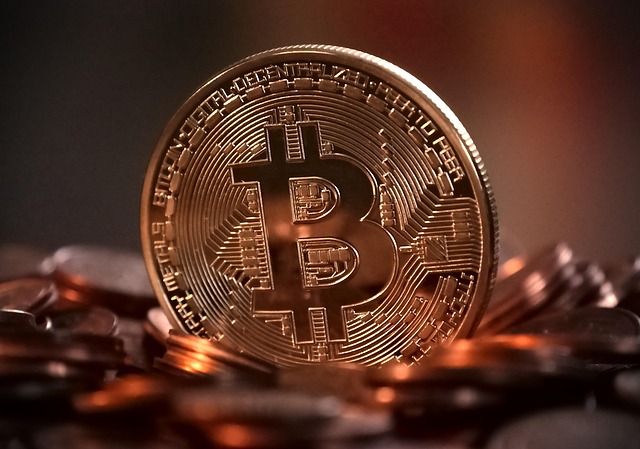Bitcoin price tags $86K as Trump tariff relief boosts breakout odds
Bitcoin (BTC) hit an eleven-day high on April 13 as the crypto market relief rally closely tracked US financial policy changes.BTC/USD 1-hour chart. Source: Cointelegraph/TradingViewBitcoin traders say brace for more volatilityData from Cointelegraph Markets Pro and TradingView showed BTC/USD reaching $86,000 for the first time since April 2.The pair had reacted well to news that US President Donald Trump had decided to exclude certain key products from his ongoing trade tariffs against China.Traditional markets are closed on weekends —creating lower-liquidity trading in crypto markets and raising the chance for price volatility— with Bitcoin subsequently dropping under $84,000.With hours to go until the weekly close, BTC/USD was thus up 7% for the week, having started with a trip to new five-month lows.Commenting, traders were cautious over BTC price strength.Call me crazy but I don’t think I trust this breakout on $BTC.Low volume, overbought stoch, and on a weekend.If we can remain over 84k through Monday I’ll look for higher but for now this seems sketchy. pic.twitter.com/qKVdYAOYPJ— Roman (@Roman_Trading) April 12, 2025Daan Crypto Trades noted the ongoing interplay with the 200-day exponential moving average (EMA) at $85,000.“This is however still a weekend move so far and we know next week will be volatile again with news regarding tariffs and the first big tech earnings coming up,” part of a post on X read.BTC/USD 1-day chart with 200 EMA. Source: Cointelegraph/TradingViewWell-known trader Peter described the rebound from the lows as looking “more corrective than it does impulsive.”BTC/USD 2-hour chart. Source: Peter Brandt/XPopular trader and analyst Rekt Capital meanwhile saw the true hurdle to a Bitcoin bull market rebound coming in the form of a stubborn long-term daily downtrend.“Bitcoin has Daily Closed above the Downtrend. Thus, breakout confirmation is underway,” one of his latest X updates explained alongside an illustrative chart.“However BTC has previously Daily Closed above the Downtrend but failed its retest (a few of the red circles). Retest needs to be successful and it is in progress.”BTC/USD 1-day chart. Source: Rekt Capital/XAs Cointelegraph reported, the daily downtrend, in place since late 2024, is earmarked as a key hurdle for bulls to overcome.Related: Bollinger Bands creator says Bitcoin forming ‘classic’ floor near $80KRSI bullish divergence still in playAnother post flagged promising signals on Bitcoin’s relative strength index (RSI) indicator.A classic leading indicator, RSI continued to print another bullish divergence with price on daily timeframes.“Bitcoin is developing yet another Higher Low on the RSI while forming Lower Lows on the price,” Rekt Capital summarized.“Overall, throughout the cycle Bitcoin has formed Bullish Divergences like this on a few occasions already. Each Bull Div preceded reversals to the upside.”BTC/USD 1-day chart with RSI data. Source: Rekt Capital/XThis article does not contain investment advice or recommendations. Every investment and trading move involves risk, and readers should conduct their own research when making a decision.
Trump exempts select tech products from tariffs, crypto to benefit?
United States President Donald Trump has exempted an array of tech products including, smartphones, chips, computers, and select electronics from tariffs, giving the tech industry a much-needed respite from trade pressures.According to the US Customs and Border Protection, storage cards, modems, diodes, semiconductors, and other electronics were also excluded from the ongoing trade tariffs.”Large-cap technology companies will ultimately come out ahead when this is all said and done,” The Kobeissi letter wrote in an April 12 X post.US Customs and Border Protection announces tariff exemptions on select tech products. Source: US Customs and Border ProtectionThe tariff relief will take the pressure off of tech stocks, which were one of the biggest casualties of the trade war. Crypto markets are correlated with tech stocks and could also rally as risk appetite increases on positive trade war headlines.Following news of the tariff exemptions, the price of Bitcoin (BTC) broke past $85,000 on April 12, a signal that crypto markets are already responding to the latest macroeconomic development.Related: Billionaire investor would ‘not be surprised’ if Trump postpones tariffsMarkets hinge on Trump’s every word during macroeconomic uncertaintyPresident Trump walked back the sweeping tariff policies on April 9 by initiating a 90-day pause on the reciprocal tariffs and lowering tariff rates to 10% for countries that did not respond with counter-tariffs on US goods.Bitcoin surged by 9% and the S&P 500 surged by over 10% on the same day that Trump issued the tariff pause.Macroeconomic trader Raoul Pal said the tariff policies were a negotiation tool to establish a US-China trade deal and characterized the US administration’s trade rhetoric as “posturing.”Bitcoin advocate Max Keiser argued that exempting select tech products from import tariffs would not reduce bond yields or further the Trump administration’s goal of lowering interest rates.Yield on the 10-year US government bond spikes following sweeping trade policies from the Trump administration. Source: TradingViewThe yield on the 10-year US Treasury Bond shot up to a local high of approximately 4.5% on April 11 as bond investors reacted to the macroeconomic uncertainty of a protracted trade war.”The concession just given to China for tech exports won’t reverse the trend of rates going higher. Confidence in US bonds and the US Dollar has been eroding for years and won’t stop now,” Keiser wrote on April 12.This article does not contain investment advice or recommendations. Every investment and trading move involves risk, and readers should conduct their own research when making a decision.Magazine: Trump’s crypto ventures raise conflict of interest, insider trading questions
Justin Sun 'not aware' of circulating reports about CZ plea deal
Tron founder Justin Sun says he’s unaware of the recent rumors surrounding former Binance CEO Changpeng “CZ” Zhao, following reports alleging that Zhao provided evidence against him as part of his plea deal with the US Department of Justice (DoJ).“I’m not aware of the circulating rumors. CZ is both my mentor and a close friend,” Sun said in an April 11 X post. Sun brushes off CZ rumors“He has played a crucial role in supporting me during my entrepreneurial journey,” Sun added.Sun’s X post came just hours after speculation grew over an April 11 Wall Street Journal report, which alleged that Zhao agreed to provide evidence on Sun as part of his plea deal, citing sources familiar with the matter. Zhao was sentenced to four months in prison in April 2024 for Anti-Money Laundering (AML) violations.The report added, “that arrangement hasn’t previously been reported.”Source: dbWhile Zhao is yet to publicly address the reports, Sun commended Zhao’s integrity and said that the DoJ is one of T3 Financial Crime Unit’s (T3 FCU) — which Tron co-founded along with Tether and TRM Labs — “closest and most trusted partners.” “To this day, his conduct and principles remain the highest standard I strive to follow as a founder,” Sun said of Zhao. Sun added:“Whether it’s CZ or our partners at the DOJ, we maintain direct, honest communication at all times. I have full trust in each and every one of them.”Zhao walked free from a US federal prison on Sept. 27. With a reported net worth of approximately $60 billion, Zhao is the wealthiest person ever to serve a prison sentence in the US.Source: Justin SunMeanwhile, on Feb. 26, the US Securities and Exchange Commission and Justin Sun asked a federal court to pause the regulator’s case against the crypto entrepreneur to allow for settlement talks.In March 2023, the SEC sued Sun and three of his companies, the entity behind Tron, the Tron Foundation and the file-sharing platform backers the BitTorrent Foundation and its San Francisco-based parent firm, Rainberry Inc.Cointelegraph reached out to the US Department of Justice but did not receive a response by time of publication.
What is a bear raid, and how do whales use them in crypto trading?
Key takeawaysBear raids involve deliberate efforts by whales to drive down crypto prices using short-selling, FUD and large-scale sell-offs to trigger panic and profit from the dip.These raids create volatility, trigger liquidations and damage retail confidence. However, they can also expose weak or fraudulent projects.Signs include sudden price drops, high trading volume, absence of news and quick recoveries, indicating price manipulation rather than natural market trends.Traders can guard against bear raids by using stop-loss orders, diversifying portfolios, monitoring whale activity and trading on reputable, regulated platforms.Not all market moves are organic in the dynamic world of crypto trading; some are engineered to make quick profits. One such tactic is the bear raid, often driven by powerful market players known as whales. These traders strategically use short-selling, where they borrow and sell assets at current prices, aiming to repurchase them cheaper once the price drops. So, how exactly does this tactic play out? This article dives into what a bear raid is and how it functions. It also covers how bear raids impact the crypto market, what the signs are and how retail investors can protect their interests. What is a bear raid?A bear raid is a deliberate strategy to drive down the price of an asset, typically through aggressive selling and the spread of fear, uncertainty and doubt (FUD). The tactic dates back to the early days of traditional stock markets, where influential traders would collaborate to manipulate prices for profit.Execution of a bear raid involves selling large volumes of a targeted asset to flood the market. The sharp increase in supply creates downward pressure on the price. At the same time, the perpetrators circulate negative rumors or sentiments, often through media, to amplify fear and uncertainty. As panic sets in, smaller or retail investors often sell off their holdings, further accelerating the price drop.Bear raids differ from natural market downturns. While both lead to falling prices, a bear raid is orchestrated and intentional, meant to benefit those holding short positions. Natural downturns are driven by broader economic trends, market corrections or legitimate changes in investor sentiment.Bear raids are generally considered a form of market manipulation. Regulatory agencies monitor trading activities, investigate suspicious patterns and penalize fraudulent practices such as pump-and-dump schemes or wash trading. To enhance transparency, they require exchanges to implement compliance measures, including KYC (Know Your Customer) and AML (Anti-Money Laundering) protocols. By imposing fines, bans, or legal action, regulators work to maintain fair markets and protect investors. Regulators attempt to deter cryptocurrency market manipulation by enforcing strict rules and oversight. In the US, the Securities and Exchange Commission (SEC) focuses on crypto assets that qualify as securities, while the Commodity Futures Trading Commission (CFTC) regulates commodities and their derivatives. Under the Markets in Crypto-Assets Regulation (MiCA) law, enforcement in the EU is the responsibility of financial regulators in the member states. Did you know? In 2022, over 50% of Bitcoin’s daily trading volume was influenced by just 1,000 addresses — commonly called whales — highlighting their market-shaking power.Who executes bear raids?In the crypto world, “whales” are big investors capable of executing bear raids. Because of their substantial holdings of cryptocurrencies, whales can influence market trends and price movements in ways smaller retail traders cannot.Compared to other traders, whales operate on a different scale, thanks to their access to more capital and advanced tools. While you might be looking for short-term gains or simply following trends, whales often use strategic buying or selling to create price shifts that benefit their long-term positions. Their moves are carefully planned and can affect the market without you even realizing it.If you are a regular crypto trader, you might be aware of the massive crypto movement between wallets. Such large-scale transfer of crypto causes panic or excitement in the cryptocurrency community. For example, when a whale transfers a large amount of Bitcoin (BTC) to an exchange, it may signal a potential sell-off, causing prices to dip. Conversely, removing coins from exchanges to self-custodial wallets might suggest long-term holding, which can lead to a price upswing.The relatively low liquidity of crypto markets gives whales such influence over crypto trading. With fewer buyers and sellers compared to traditional financial markets, a single large trade can dramatically swing prices. This means whales can manipulate market conditions, intentionally or not, often leaving retail traders struggling to keep up.Did you know? Bear raids often trigger automated liquidations in leveraged positions, sometimes causing crypto prices to nosedive by over 20% in minutes.Real-world examples of whales profiting from falling pricesIn crypto, cases of bear raids are generally hard to confirm due to anonymity. Nevertheless, these examples of incidents when whales made profits from falling cryptocurrency prices will help you understand how such scenarios work:Terra Luna collapse (May 2022)A Bank for International Settlements (BIS) report disclosed that during the 2022 crypto market crash, triggered by the collapse of Terra (LUNA), whales made a profit at the expense of retail investors. Smaller retail investors predominantly purchased cryptocurrencies at lower prices, whereas whales primarily sold off their holdings, profiting from the downturn.In May 2022, the Terra blockchain was briefly suspended following the failure of its algorithmic stablecoin TerraUSD (UST) and the associated cryptocurrency LUNA, resulting in a loss of nearly $45 billion in market value in one week. The company behind Terra filed for bankruptcy on Jan. 21, 2024. FTX collapse (November 2022)In November 2022, close financial ties between FTX and Alameda Research set off a chain reaction: a bank run, failed acquisition deals, FTX’s bankruptcy and criminal charges for founder Sam Bankman-Fried.Yet again, as FTX collapsed, retail investors rushed to buy the dip. Whales, however, sold crypto in bulk right before the steep price decline, according to the same BIS report that discussed the fall of Terra Luna.Graph 1.B illustrates a transfer of wealth, where larger investors liquidated their holdings, disadvantaging smaller investors. Furthermore, Graph 1.C reveals that following market shocks, large Bitcoin holders (whales) reduced their positions, while smaller holders (referred to as krill in the report) increased theirs. The price trends indicate that whales sold their Bitcoin to krill before significant price drops, securing profits at the krill’s expense.Bitconnect (BCC) shutdown (January 2018)Bitconnect, a cryptocurrency promising unusually high returns via an alleged trading bot, experienced a dramatic collapse in early 2018. Despite reaching a peak valuation of over $2.6 billion, the platform was widely suspected of operating as a Ponzi scheme. The token suffered a steep fall of over 90% in value within hours. While this was not a classic bear raid, the sudden exit of insiders and whale sell-offs, combined with negative publicity, created a cascading effect that devastated retail investors.Did you know? Whale wallets are tracked so closely that some platforms offer real-time alerts for their trades, helping retail traders anticipate possible bear raids.How whales execute bear raids in crypto, key stepsIn the crypto space, whales can execute bear raids by leveraging their massive holdings to trigger sharp price drops and profit from the following panic. These tactics typically unfold in a few steps:Step 1: Accumulating a position: Whales begin by taking positions that will benefit from falling prices, such as shorting a cryptocurrency or preparing to buy large quantities once the price drops. Step 2: Initiating the raid: Next, the whale triggers the sell-off by dumping large volumes of the targeted crypto asset. This sudden surge in supply causes the price to drop sharply, shaking market confidence.Step 3: Spreading FUD: To maximize the impact, whales may spread FUD using coordinated social media campaigns or fake news. Rumors like adverse regulatory action or insolvency can spread quickly, prompting retail traders to sell in panic.Step 4: Triggering sell-offs: The combination of visible large sell orders and negative sentiment induces other investors to sell their holdings, amplifying the downward pressure on the asset’s price.Step 5: Profiting from the dip: Once the price plunges, the whale steps in to either buy back the asset at a lower price or close their short positions for a profit.The whales’ playbook: How do they manipulate the market? Crypto whales use sophisticated tactics to carry out bear raids and manipulate the market to their advantage. These tactics give whales an edge over retail traders, enabling them to manipulate prices and profit while the latter are left to deal with the chaos:Trading bots and algorithms: Advanced bots allow whales to execute large sell orders in milliseconds, triggering sharp price drops. Before the market can react, the whales turn the situation in their favor.Leverage and margin trading: Whales rely (to a large extent) on leverage and margin trading to make profits. Borrowing funds enables them to increase their position size and amplify the sales pressure. It triggers stronger market reactions than would be possible with their holdings.Low liquidity on certain exchanges: Whales can place large sell orders in illiquid markets with fewer participants and a low volume of trades, causing disproportionate price drops. They may even manipulate order books by placing and canceling large fake orders, known as spoofing, to trick other traders.Collaborate with other whales: Whales may collaborate with other large holders or trading groups to coordinate attacks, making the bear raid more effective and harder to trace.Impact of bear raids on the crypto market Bear raids can significantly disrupt the crypto market. Here is how they impact different players and the broader ecosystem: Effects on retail traders: Retail investors tend to react overwhelmingly during a bear raid. The sudden price drop and spread of fear often lead to panic selling, resulting in heavy losses for the investors who exit at the bottom. Most retail traders sell emotionally, not realizing they are playing into the whale’s strategy. Broader market consequences: Bear raids increase market volatility, making it riskier for new and existing investors. These events can shake overall confidence in the crypto space, leading to reduced trading activity and investor hesitation. In extreme cases, they can even trigger liquidations across multiple platforms. Potential positive outcomes: Bear raids can sometimes have cleansing effects on the crypto market. Market corrections induced by such raids remove overvalued assets from unsustainable highs. In some cases, these raids may expose weak or fraudulent projects, forcing investors to reassess their choices.Signs of crypto bear raidsBear raids are misleading market moves that resemble genuine downturns, often tricking traders into selling too soon. A quick drop in price may look like the start of a bearish trend, leading to impulsive decisions by retail traders. Often, these dips are short-lived and followed by a swift recovery once the whales take their profits. Recognizing the signs of crypto bear raids is key to avoiding losses.Here are a few signs of crypto bear raids:A sudden price drop that seems to break support levels Spike in trading volume during a market declineQuick rebound after the dipNegative sentiment causing trader panic No major news to explain the dropHow to protect yourself from crypto bear raidsTo safeguard your investments from crypto bear raids, you can use the following strategies:Conduct thorough technical analysis: Regularly analyze price charts and indicators to discern genuine market trends from manipulative movements. Implement stop-loss orders: Set predetermined sell points to automatically exit positions if prices fall to a certain level, limiting potential losses during sudden downturns. Diversify your portfolio: Spread investments across various assets to mitigate risk. A well-diversified portfolio is less vulnerable to the impact of a bear raid on any single asset. Stay informed: Monitor market news and developments to better anticipate and respond to potential manipulative activities. Use reputable exchanges: Engage with trading platforms that have robust measures against market manipulation, ensuring a fairer trading environment.The ethical debate: Crypto market manipulation vs free market dynamicsThe principles of free market dynamics starkly contrast to market manipulation tactics, such as bear raids. Proponents of free markets favor minimal regulatory intervention, arguing that it fosters innovation and self-regulation. A free market is an economic system in which supply and demand determine the prices of goods and services. Still, the decentralized and often unregulated nature of crypto markets has made them susceptible to manipulative practices. Bear raids require coordinated efforts by perpetrators to drive down asset prices, misleading investors and undermining market integrity. Such tactics bring losses to retail investors and erode trust in the financial system. Critics point out that without adequate oversight, these manipulative strategies can proliferate, leading to unfair advantages and potential economic harm. While free market dynamics are valued for promoting efficiency and innovation, the implications of unchecked market manipulation in the cryptocurrency space can be disastrous. Incidents like bear raids highlight the need for balanced regulation to ensure fairness and protect investors.Crypto regulations worldwide for market manipulation tacticsCryptocurrency market manipulation, including tactics like bear raids, has prompted varied regulatory responses worldwide. In the US, the Commodity Futures Trading Commission (CFTC) classifies digital currency as commodities and actively pursues fraudulent schemes, including market manipulation practices such as spoofing and wash trading. The Securities and Exchange Commission (SEC) has also taken action against individuals who have manipulated digital asset markets. The European Union has implemented the Markets in Crypto-Assets (MiCA) regulation to establish a comprehensive framework addressing market manipulation and ensure consumer protection regarding stablecoins.These efforts notwithstanding, the decentralized and borderless nature of cryptocurrencies presents challenges for regulators. Global cooperation and adaptive regulatory frameworks are essential to effectively combat market manipulation and safeguard investors in the evolving landscape of digital finance.Progression articlesLong and short positions in crypto, explainedA beginner’s guide on how to short Bitcoin and other cryptocurrenciesWhat is a bear trap in trading and how to avoid it?This article does not contain investment advice or recommendations. Every investment and trading move involves risk, and readers should conduct their own research when making a decision.
Conor McGregor’s REAL memecoin: Everything you need to know
What Is REAL? Conor McGregor’s staking-enabled memecoin explained Conor McGregor, also known as “Notorious,” is an Irish mixed martial artist born in Dublin on July 14, 1988. He is renowned for his achievements in the Ultimate Fighting Championship (UFC), where he became the first fighter to simultaneously hold titles in two weight classes — featherweight and lightweight. Beyond his fighting career, McGregor ventured into entrepreneurship, in 2018 launching his whiskey brand, Proper No. Twelve, named after his Dublin roots. He leveraged his UFC fame to market the triple-distilled blend. In 2021, McGregor sold a majority stake to Proximo Spirits for an estimated $600 million, while retaining a significant role.In April 2025, McGregor ventured into the crypto market by introducing a memecoin named “REAL.” Promising to change the crypto world, the digital token was launched through a sealed-bid auction to prevent interference from bots and snipers. Developed in collaboration with the Real World Gaming (RWG) decentralized autonomous organization (DAO), the REAL memecoin offers holders staking rewards and voting rights within its ecosystem. What happened during REAL memecoin fundraising? With the REAL memecoin, McGregor aimed to make a big impact in the crypto world. However, things didn’t go as planned.McGregor partnered with RWG, a decentralized autonomous organization, to raise funds for the project with a minimum goal of $1,008,000. But during the 28-hour presale, the DAO collected $392,315 in USDC (USDC) from 668 contributors, only 39% of its target.RWG acknowledged that the auction failed to hit the minimum raise, stating that they would fully refund all the bids. McGregor himself endorsed the announcement.For the fundraising, the REAL token was sold through a sealed-bid auction on Axis Finance. Users privately submitted bids specifying the quantity and price they desired, and tokens were allocated to the highest bidders at a single clearing price.After deliberating where they went wrong, RWG is now looking to relaunch the fundraising. The team hasn’t yet provided a date for the relaunch.McGregor has remained outspoken, characteristically announcing or endorsing project updates with his signature line, “Ladies and gentlemen, this is REAL!” The team plans to reshape the token’s purpose and possibly modify its fundraising approach for a more successful relaunch.Did you know? Memecoins often rise in value due to community hype and viral trends, not technical innovation. While they lack strong fundamentals, social media buzz and celebrity endorsements can drive massive short-term gains, making them popular among high-risk, high-reward investors. Reasons for REAL memecoin’s fundraising failure RWG’s attempt to launch the REAL memecoin faced multiple challenges, leading to the DAO’s failure to meet fundraising goals. Several factors contributed to this outcome:Market timing: The launch coincided with a downturn in the cryptocurrency market. Major cryptocurrencies, including Ether (ETH) and Solana (SOL), faced sharp declines. Only Bitcoin (BTC) was an exception, as investors viewed it as a value holder. Memecoins faced almost a 60% decline after Dec. 24, except GHIBLI. Such a gloomy environment wasn’t conducive for the launch of yet another memecoin.Economic conditions: The world economy is going through a phase of reconstruction due to the Trump administration’s reorganization of tariffs. This resulted in a US stock crash of about $5 trillion, more than the total market cap in crypto. (Though the crash happened after the fundraising failure, the story was in the making). The tariffs led to uncertainty in the world economic system, which also impacted the crypto market. Recession fears and substantial losses in US equities made investors more cautious. Scams surrounding memecoins: In 2024, over $500 million was lost to memecoin rug pulls and scams, as reported by Merkle Science, fostering significant distrust toward memecoins. One instance involved hackers compromising Kylian Mbappe’s X account to promote a fraudulent memecoin that reached a $460 million market cap before a rug pull. Similarly, Wiz Khalifa’s 35.7 million X followers were targeted with a fake WIZ token that briefly hit a $3.4 million market cap before collapsing. This decline in investor confidence likely affected the REAL token’s reception. Nansen Research’s Nicolai Sondergaard noted that experienced traders were quickly taking profits.Misinterpretation of the token’s objective: Despite McGregor’s assertions that REAL was a legitimate project with real-world applications, many perceived it as another celebrity-endorsed memecoin. This misunderstanding may have undermined the token’s credibility and deterred potential investors.Investor skepticism toward celebrity tokens: The crypto community has grown wary of celebrity-backed tokens, especially after several high-profile failures. Even tokens tied to Donald Trump and Melania declined sharply, causing investors significant losses. Other known celebrity token failures include Hawk Tuah (HAWK) by Haliey Welch and Daddy Tate (DADDY) by Andrew Tate. Several celebrities associated with crypto earned a bad name for themselves. Davido, a popular Nigerian Afrobeat star, launched his memecoin Davido (DAVIDO) and made money using pump and dump. These incidents caused investors to view memecoins with suspicion.McGregor’s image: While central to his success in the UFC, Conor McGregor’s brash persona worked against him in the crypto world. His history of controversies and impulsive behavior undermined trust in the project’s legitimacy. His image raised red flags, especially in a space already plagued with scams. Did you know? Some memecoins have sparked real-world donations and activism. Dogecoin’s community once raised over $50,000 to send the Jamaican bobsled team to the 2014 Winter Olympics, showing that memecoins can fuel fun and philanthropy. Purpose and tokenomics of REAL memecoin The purpose of REAL is to facilitate functions like staking, governance, and utility, as well as a real-world MMA fight simulator and future business integrations. Its tokenomics, however, have come under criticism.According to the RWG team, the REAL memecoin tokenomics model was designed for transparency and community engagement, as 32% of the total supply was allocated to the DAO treasury to support ecosystem growth, while 17% was distributed to the community to incentivize participation. To earn governance rights and rewards, tokenholders could stake the coin; 10% was reserved for the development team. The model aimed to fund sports and gaming startups, blending hype with practical utility.Critics found flaws in the tokenomics, and many regard that as a reason for the poor show in fundraising. They were particularly harsh on the token’s 12-hour unlock window. This allowed investors to sell their tokens shortly after the acquisition and make profits, even while the price declined. Several projects had used such a structure earlier for pump and dump, which created a bad precedent. This deterred long-term investors seeking sustainable growth.The project’s marketing strategy also raised concerns, as many felt the project added no real value and was just an attempt to take advantage of a celebrity’s name. The use of third-party logos on its website led to accusations of misleading promotional tactics, undermining the project’s credibility and deterring potential investors. And the lack of a clear roadmap for REAL only amplified investor skepticism. Broader risks of celebrity-backed tokens The fate of McGregor’s REAL memecoin fundraising highlights the broader risks of celebrity crypto endorsements. While celebrities bring attention and massive followings, their involvement often lacks substance, long-term commitment or technical understanding of the projects they promote. Celebrity-backed tokens often ride on hype rather than real value, leading to pump-and-dump scenarios where early investors benefit while latecomers suffer losses. The credibility of the crypto industry suffers when such projects collapse, reinforcing public distrust. The way REAL’s fundraising event turned out serves as a warning that fame doesn’t equal a project’s credibility.Regulators also scrutinize such endorsements more closely, potentially bringing legal consequences for misleading promotions. For the crypto space to mature, projects must prioritize transparency, utility and experienced leadership over viral marketing. The REAL memecoin fundraising failure emphasizes that genuine trust and long-term vision are more valuable than celebrity clout in crypto fundraising.Did you know? Shiba Inu, launched in 2020 by “Ryoshi,” was dubbed the “Dogecoin killer.” With a quadrillion-token supply and a vibrant “Shib Army” community, it hit a $40 billion market cap in 2021. What can investors learn from the failure of REAL memecoin fundraising? Investors in the crypto space can learn many lessons from the failed fundraising of REAL memecoin. First and foremost, hype is not a substitute for value. Relying solely on celebrity influence without understanding the fundamentals of a project can lead to poor investment decisions.REAL also revealed how quickly investor sentiment can shift. Initial excitement turned into skepticism as users noticed the lack of community involvement and utility behind the token. McGregor’s limited engagement and controversial public image further fueled doubts, proving that star power doesn’t guarantee project longevity or trustworthiness.Investors need to recognize the importance of doing their own research (DYOR). Just because a celebrity backs a token doesn’t mean it is credible. Checking for real-world use cases, developer activity, tokenomics and community feedback is essential.Finally, the collapse of REAL fundraising highlights the need for regulatory clarity in celebrity endorsements. Without it, misleading promotions will continue to hurt retail investors and ultimately undermine the credibility of the crypto industry.
Democrats slam DOJ’s ‘grave mistake’ in disbanding crypto crime unit
Crypto-critical US Senator Elizabeth Warren has led six Senate Democrats in urging the Department of Justice to reverse its decision to terminate its crypto investigations and prosecutions division.In an April 10 letter to Deputy Attorney General Todd Blanche, the Senators said the decision to disband the department’s National Cryptocurrency Enforcement Team was a “grave mistake” that would support “sanctions evasion, drug trafficking, scams, and child sexual exploitation.”Senators Richard Durbin, Mazie Hirono, Sheldon Whitehouse, Christopher Coons and Richard Blumenthal signed the letter in addition to Warren.On April 7, Blanche shuttered the DOJ’s crypto enforcement team, saying in a memo that “The Department of Justice is not a digital assets regulator.”The senators claim that the decision gave a “free pass to cryptocurrency money launderers” and claimed that crypto mixing services — used to obfuscate blockchain transactions — are “go-to tools for cybercriminals.” “It makes no sense for DOJ to announce a hands-off approach to tools that are being used to support such terrible crimes,” the letter said.An excerpt of Democrat’s letter to the DOJ. Source: US Senate Committee on Banking, Housing, and Urban AffairsThe senators also questioned why the Justice Department had decided not to prosecute a “host of crimes involving digital assets, including violations of the Bank Secrecy Act.”They claimed that this creates a “systemic vulnerability in the digital assets sector,” which “drug traffickers, terrorists, fraudsters, and adversaries” will exploit on a large scale. The lawmakers requested a staff-level briefing no later than May 1, providing “detailed information on the rationale behind these decisions.” Targeting Trump family crypto endeavors The letter also took a swipe at the Trump family’s crypto projects, suggesting potential conflicts of interest.Related: SafeMoon boss cites DOJ’s nixed crypto unit in latest bid to toss suitA press release accompanying the letter stated that the senators are raising concerns about the “potential connections” between the DOJ’s actions and the crypto ventures of President Donald Trump and his family.The Trumps have an interest in and have backed the crypto platform World Liberty Financial along with its token. The platform is also planning to launch a stablecoin while President Trump’s sons, Eric Trump and Donald Trump Jr., are working to launch a crypto-mining company called American Bitcoin.“Your decisions give rise to concerns that President Trump’s interest in selling his cryptocurrency may be the reason for easing law enforcement scrutiny,” the Democrats stated. In a memo announcing the crypto enforcement team’s disbandment, Blanche accused the Biden administration of using the Justice Department to “pursue a reckless strategy of regulation by prosecution.”Magazine: Illegal arcade disguised as … a fake Bitcoin mine? Soldier scams in China: Asia Express
SEC drops suit against Helium for alleged securities violations
The US Securities and Exchange Commission (SEC) has dismissed a lawsuit against Nova Labs, developer of decentralized wireless network Helium, for allegedly issuing unregistered securities, Helium stated in an April 10 blog post. Filed in January 2025, the lawsuit was among the SEC’s final enforcement actions against a cryptocurrency developer under former Chair Gary Gensler, who stepped down from his post on Jan. 20 after US President Donald Trump took office. The dismissal with prejudice means the blockchain developer cannot be charged with similar violations again for issuing in 2019 its native token Helium (HNT), the company said. “[W]e can now definitively say that all compatible Helium Hotspots and the distribution of HNT, IOT, and MOBILE tokens through the Helium Network are not securities,” Helium said. “[T]he outcome establishes that selling hardware and distributing tokens for network growth does not automatically make them securities in the eyes of the SEC [and] that the SEC cannot bring these charges against Helium again,” it added.Source: HeliumThe SEC’s Helium reversal came the same day Trump-nominee Paul Atkins formally replaced Gensler as SEC Chair after a lengthy confirmation process in the Senate. Helium is a blockchain network designed to let “anyone build and own massive wireless networks,” according to its website. The protocol reports having roughly 375,000 active hotspots. According to CoinGecko, HNT has a market capitalization of approximately $480 million as of April 10 — down from highs of more than $5 billion in November 2021. HNT’s price since 2019. Source: CoinGeckoRelated: SEC will drop its appeal against Ripple, CEO Garlinghouse saysChanging policy stanceUnder Gensler, the SEC brought upward of 100 charges against Web3 developers for various alleged securities violations. Since Trump took office, the SEC has sharply reversed course, dropping numerous charges against crypto firms, including Coinbase, Kraken, Ripple and Uniswap. Trump has positioned himself as a pro-crypto President, promising to make America the “world’s crypto capital,” appointing industry-friendly leaders to key regulatory posts, and ordering the federal government to create a national Bitcoin (BTC) reserve.For some crypto executives, Trump’s policies — such as announcing sweeping tariffs on US imports in April — threaten to stymie crypto’s progress.Magazine: 3 reasons Ethereum could turn a corner: Kain Warwick, X Hall of Flame
How Bitcoin’s three pillars are about to fix money — StarkWare CEO
Bitcoin wasn’t supposed to just sit still.When Satoshi Nakamoto released the white paper in 2008, it wasn’t a blueprint for digital gold; it was a peer-to-peer cash system. But fast-forward to today, and Bitcoin’s biggest critics and supporters alike often agree on one thing: It doesn’t really work like money, at least not yet.In the latest episode of The Clear Crypto Podcast, hosts Nathan Jeffay and Gareth Jenkinson speak with Eli Ben-Sasson, the co-founder of StarkWare and one of the leading minds in cryptographic scaling. His message? That might be about to change.Bitcoin’s three pillarsBen-Sasson lays out a compelling framework for how Bitcoin can evolve — not by abandoning its principles, but by scaling them. He describes three core pillars that need to align in order for Bitcoin to fulfill its promise. Broadness, integrity and verifiability, according to Ben-Sasson, are concrete, technical targets for Bitcoin’s widespread adoption and useability. Not only that, but the tools to hit these targets already exist. The reintroduction of a long-dormant opcode, OP_CAT, could be the first domino. “Nine lines of code,” he said, “that would make Bitcoin programmable again.”Store of value or economic backboneRight now, Bitcoin is often described as digital gold, a pristine, untouchable store of value. But Ben-Sasson wants to see it function more like a digital economy: permissionless, inclusive and usable in everyday transactions. That means rethinking what Bitcoin is for and upgrading how it works.“If we don’t make Bitcoin more useful, we risk making it irrelevant.”The conversation touches on everything from the politics of Bitcoin governance to the role of zero-knowledge proofs and layer-2s in building scalable, decentralized systems. Related: Jack Dorsey pushes Signal to adopt Bitcoin paymentsIt also explores what it would take to build money that works for everyone, not just the technically elite or financially privileged.“We are not in a situation where Bitcoin is a system that today can allow any two parties to transact without any trusted intermediary. We’re simply not there. To me, that’s the start, middle and end of of the reason why things need to change.”To hear the full conversation on The Clear Crypto Podcast, listen to the full episode on Cointelegraph’s Podcasts page, Apple Podcasts or Spotify. And don’t forget to check out Cointelegraph’s full lineup of other shows! Magazine: SEC’s U-turn on crypto leaves key questions unanswered
US wrestling star Ric Flair launches tokenized Telegram sticker pack
Legendary professional wrestler Ric Flair launched a tokenized sticker collection on Telegram on April 9, becoming the latest celebrity to launch a tokenized social project.Spokespeople for the project told Cointelegraph they are considering rewarding early sticker holders with future perks, though no specifics were shared. Flair told Cointelegraph that the project was launched to drive community engagement and added:”Telegram is where people are really showing up these days. It is global, it is fast, and the way people communicate there just felt like the perfect fit for what we are doing. These stickers are about energy, personality, and culture, and Telegram is the place to bring that to life.”The wrestler’s tokenized sticker launch follows mixed-martial arts champion and Irish political candidate Conor McGregor’s memecoin launch on April 5, which failed and highlights the struggle of risk-on investments and digital assets amid the recent macroeconomic downturn.Flair, who retired from wrestling in 2022, has previously ventured into the crypto space. In 2024, he introduced the “Wooooo!” coin (WOOOOO), a memecoin inspired by his iconic catchphrase. The token has no trading activity as of April 9, 2025, with only one address controlling over 70% of the supply, according to CoinMarketCap.The legendary wrestler has a history of merchandising his brand through various collectibles, including physical stickers available on his official online store and Amazon.Wrestling icon Ric Flair joins Telegram and touts new project. Source: Ric FlairRelated: Melania Trump’s memecoin team ‘quietly sold’ $30M, says BubblemapsMemecoins suffer in the turbulent macroeconomic environmentMemecoins were one of the biggest narratives of 2024 and one of the highest-performing asset classes, with top-performing memecoins returning four-figure percentage gains to investors during the year.The market for memecoins and other social tokens peaked in December 2024 amid a historic rally in the crypto markets. However, since then, memecoin prices have plummeted, with many top-tier memecoins such as Dogecoin (DOGE) and Pepe (PEPE) shedding approximately 70-80% of their value over the period.The macroeconomic uncertainty from the ongoing trade war has also damped the appetite for riskier assets as investors flee into more stable investments like cash, government bonds, and stablecoins.Crypto markets bleed amid macroeconomic downturn, particularly altcoins, memes, and other social tokens. Source: TradingViewConor McGregor’s REAL token launched amid the macroeconomic crash and failed to meet its $1 million minimum funding requirement.The project only managed to raise $392,315 during its April 5-6 sealed-bid auction presale — well under the $3 million goal set by the team and the Real World Gaming decentralized autonomous organization (DAO).REAL’s developers announced a full refund to bidders after failing to reach the minimum funding target. Despite this, the Real World Gaming DAO signaled that this would not be the end of the project.Magazine: Memecoins: Betrayal of crypto’s ideals… or its true purpose?
No crypto project has registered with the SEC and ‘lived to tell the tale’ — House committee hearing
United States securities laws are not flexible enough to account for digital assets, as evidenced by the parade of crypto-native companies that have tried and failed to get into the Securities and Exchange Commission’s (SEC) good graces, Rodrigo Seira, special counsel to Cooley LLP, told a House Committee hearing on April 9.The hearing, titled American Innovation and the Future of Digital Assets Aligning the U.S. Securities Laws for the Digital Age, featured Seira, WilmerHale partner Tiffany J. Smith, Polygon chief legal officer Jake Werrett and Alexandra Thorn, a senior director at the Center for American Progress.“It is clear that the current securities regulatory framework is not a viable option to regulate crypto. It fails to achieve its stated policy goals,” Seira said in his opening remarks. “[T]he idea that crypto projects can come in and register with the SEC is demonstrably false.”Cooley LLP special counsel Rodrigo Seira addresses the committee on April 9. Source: House Committee on Financial ServicesSeira acknowledged that crypto promoters who raise capital for a new enterprise should be subject to federal securities laws. “In practice, however, virtually no crypto projects have successfully registered their tokens under federal securities laws and lived to tell the tale,” he said, adding: Projects that tried to comply with [the] SEC’s current regulatory requirements expended significant resources and effort only to fail or survive in a state of regulatory uncertainty. Moreover, registration is not a simple one-time process. Registering a token in the same manner as a stock triggers an obligation to operate as a publicly reporting company […].”Related: Crypto has a regulatory capture problem in Washington — or does it?Righting the shipIn introducing the witnesses, Representative Bryan Steil, who heads the Subcommittee on Digital Assets, Financial Technology, and Artificial Intelligence, acknowledged regulatory roadblocks, which he said were put in place by the previous administration. Congressman Bryan Steil addresses the hearing on April 9. Source: House Committee on Financial ServicesUnder President Donald Trump, lawmakers are attempting to right the ship by passing sensible legislation, said Steil.One of the first steps occurred last week when the House Financial Services Committee advanced the STABLE Act, which is designed to regulate payment stablecoins tied to the US dollar and other fiat currencies. Source: Financial Services GOPA month earlier, the Senate Banking Committee advanced the GENIUS Act, which aims to regulate stablecoin issuers by establishing reserve requirements and requiring full compliance with Anti-Money Laundering laws.The next step is “advancing the second half of this agenda: comprehensive digital asset market structure legislation,” said Steil.Representative Ro Khanna told a digital asset conference last month that a market structure bill will cross the finish line this year. The purpose of such legislation is to establish a clear regulatory framework for digital assets, including their legal categories and the enforcement jurisdiction of agencies such as the SEC and Commodity Futures Trading Commission.Magazine: Unstablecoins: Depegging, bank runs and other risks loom










